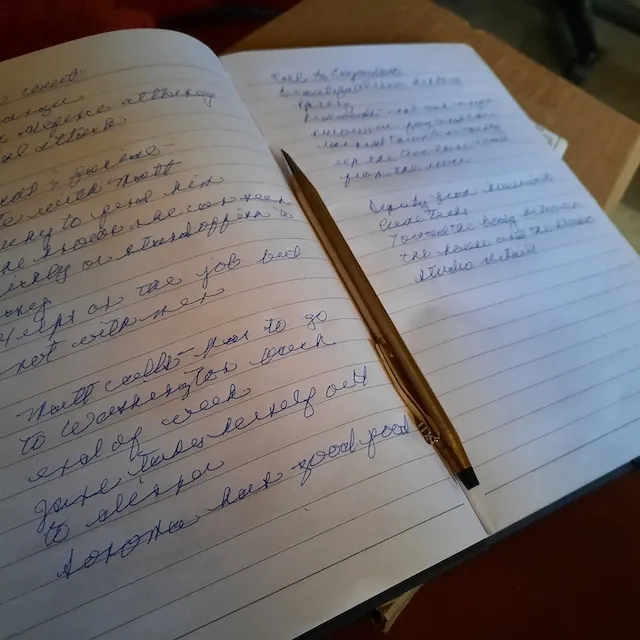5 Ways Your Mystery is Not Just a Novel: Unveiling the Unique Aspects of Mystery Genre Writing

Mystery shines with a unique luminary charm in the vast universe of literary genres. It keeps us on the edge of our seats, nudging us to turn the pages with an insatiable curiosity to discover ‘whodunit.’ Yet, a common misconception lingering is that a mystery novel holds the same writing constituents as any other genre: a perceivable start, engaging middle, and an impressive end. However, a mystery novel is not just a novel.
Mystery novel writing is like dipping a brush of intrigue and suspense into a palette of psychological understanding and then painting a deep, complex narrative that gradually reveals the unknown. From the intricacy of the plot, and the art of suspense to the importance of deep character development, the atmospheric contribution of the setting, and the jolting element of surprise—there’s much to uncover. A mystery, with its particular intricacies and defining elements, stands as not just another genre but a world of its own.
Each component needs to deliver, individually and collectively, a harmonious blend of excitement and tension, aiding in the revelation of secrets hidden within the puzzles and riddles that bind a mystery.
1 The Intricacy of Plot
Your story’s plot forms the thrilling pulse that grabs your readers. While this stands true for any genre, the craftsmanship behind a mystery novel’s plot is distinctive. In your mystery novel, you should construct a multi-layered, twisting narrative that leaves your readers collecting and piecing together clues from start to finish. Your plot’s intricacies should center around high stakes, unexpected diversions, and dramatic twists that keep your audience captivated, guessing, and actively engaged.
Within the mystery writer’s toolbox, you’ll encounter an enticing device known as the ‘red herring’. These are the tantalizing clues that lead your eager readers down an entirely different path, only to find they’ve been artfully misled away from the real perpetrator or solution. Skillfully planted ‘red herrings’ not only add an extra layer of depth to your narrative but also amplify your plot’s satisfaction when the real mystery unravels.
Take Arthur Conan Doyle’s iconic ‘Sherlock Holmes’ series as an example. Each narrative swirls with an intricate plot, where every minute detail can potentially hide a crucial clue. As the writer, it’s your job to seamlessly camouflage these tips among the ordinary, creating a complex puzzle that will stun your readers when all the pieces fall into place.
Creating such a labyrinthine plot demands careful orchestration. Imagine how your readers will absorb every word, forming hunches, predictions, and sometimes erroneous conclusions. Your task as a mystery writer is to guide, misguide, and ultimately surprise them.
In the end, the effort you pour into each turn of your mystery will set your novel apart. The layered intrigue you birth through the craft of an intricate plot makes your mystery novel not just a story but an unforgettable rollercoaster of suspense for your readers. And the joy you’ll find in constructing a mystery that keeps your readers up at night, turningpages,s and lighting bedroom lamps, will affirm why you chose to write mysteries in the first place.
2 The Art of Suspense
As a mystery writer, you already know about the magnetic pull of suspense. But harnessing this force is a sophisticated art in itself that goes far beyond laying out clues and leading the reader toward a climax. In your mystery novel, you’re not just writing a story; you’re designing an emotional expedition packed with anticipation, dread, and uncertainty.
Like a chess player anticipating their opponent’s moves, you must draw your readers in, baiting them with questions they yearn to answer, teetering on the brink of the unknown. Crafting suspense isn’t about withholding information; rather, it’s about expertly staging revelation, gradually releasing pieces of the puzzle without giving away the final picture.
Think of some of the great suspense masters like Agatha Christie or Raymond Chandler. Through skilled pacing and carefully planted clue drops, they push and pull readers, stretching the tension to its limits before releasing into the next revelation. This rollercoaster ride of emotional peaks and valleys is the quintessence of mystery writing.
Your challenge lies in nurturing and integrating this art seamlessly into your narrative. Begin by dissecting your favorite mystery novels. Observe the story’s tempo, the clues’ threading, and the revelations’ timing. Then, bring these elements into your writing, shaping them to suit your style and your plot’s unique needs.
Remember, the element of suspense is at the heart of every captivating mystery. And it’s your job to electrify each page with an undercurrent of anticipation and keep your readers glued until the grand finale unfolds. You’re not merely a storyteller but an orchestrator of suspense—leading your readers through the alleys of the unknown with a flashlight but only revealing what’s crucial at every step. And that’s what takes your mystery beyond the realm of a typical novel.
3 The Importance of Characterization
Understanding the core essence of your characters becomes fundamental. It’s not about creating figures that merely serve the narrative. Rather, you’re sculpting real, relatable individuals in this dance of intrigue and suspense. Your mystery novel isn’t simply a novel because your characters aren’t just characters, they’re the driving forces that propel your readers deeper into the enigma you’ve crafted.
The beauty of characterization in a mystery often lies in the detective figure, be it a cider-drinking sheriff of a sleepy town or a sharp-minded sociopath residing at 221B Baker Street. They’re the beating heart of your mystery that your readers root for, and invest their emotions into. As a writer, you must breathe life into them, bestowing upon them critical traits such as intellectual sophistication, keen observing power, and, sometimes, intriguing flaws.
Joël Dicker masterfully uncovers each character in The Enigma of Room 622. As the novelist sleuth delves into each character’s background, the narrative becomes more mysterious.
However, the art of characterization extends beyond your detective. Every character in your mystery, from the most obvious suspect to the insignificant-looking passerby, must carry a certain degree of depth and dimensionality. Think about the people in your favorite mystery novels, and how their actions twirled the plot, cast doubt, or unveiled shocking revelations.
Excelling at characterization means getting under the skin of each of your characters and understanding their motivations, demons, and desires. And as you make them more vivid on your pages, your readers too will start seeing them beyond the black and white of the text.
The characters you create are not just part of the plot; their depth and complexity contribute significantly to the lingering suspense and thrill. Your mastery over their portrayal is what will entice your readers, keep them involved, and add an extra layer of mystery—a critical distinction reminding us that a mystery novel is so much more than just a novel. Your characters, with their strengths and flaws, will contribute substantially to your story’s suspense and make your mystery novel an immersive experience for your readers.
4 The Power of Setting
Your setting plays a role as significant as any protagonist. It’s not just the backdrop against which your mystery unfolds; it’s an influencing and impacting entity. Your mystery novel isn’t just about who did what and why; it’s about where and under what circumstances they did it.
Consider an old mansion’s creaky floorboards, the quiet alley’s eerie silence, or the gothic lure of Victorian London. These are more than just places; they’re vital elements of suspense and intrigue, their nooks hiding secrets, and their ambiance hinting at whispers of the untold. They work to elevate the tension, magnify the drama, and even act as symbolic reflections of the plot’s concealed secrets.
Take Edgar Allan Poe’s ‘The Fall of the House of Usher’ as an illustration of how a physical location can manifest a sense of foreboding dread and reflect the psychological state of its inhabitants. As a mystery writer, you have the power to manipulate and coax your setting into augmenting the atmosphere of the mystery.
Strive to make your readers feel the biting cold of a snow-covered village under siege by a murderer or the suffocating tension within the walls of a locked-room mystery. The setting isn’t merely a canvas for you to paint your mystery on; it’s an intrinsic, vibrant character that breathes and subtly maneuvers the suspense.
The potency of your mystery novel is deeply intertwined with its setting. The environment injects palpable tension in the unfolding narrative, becoming a critical component that enlivens the plot and deepens the intrigue. Your mystery novel is not just a narrative; it’s an exploration of space—and the secrets concealed therein—that will fascinate your readers as they navigate the landscapes of crime and deduction.
5 Red Herrings and Diversion
A trait that particularly distinguishes mystery novels from other genres is the use of misdirection, or “red herrings.” Red herrings are carefully planted false leads designed to distract or misguide your readers. They are crown jewels that truly convert a simple book into a page-turning mystery, challenging the reader’s intellect and reasoning capabilities.
The art of incorporating red herrings involves subtly sending your readers down a labyrinth of possibilities, making them question their deductions. It manipulates the evidence and character relationships to cast suspicion, shadowing various angles, keeping your readers on their toes, and adding depth to your mystery.
Notice how renowned mystery writers like Agatha Christie used these misleading trails to create intricate plot lines. The key idea is to skillfully construct and deploy these elements without frustrating or overcomplicating your reader. While effective red herrings add a rich flavor to your narrative, poorly devised ones can lead to a lackluster payoff or an implausible twist.
To master this, you need to strike a perfect balance—providing enough credible evidence to make the red herrings plausible but also ensuring that the real clues gradually rise to the surface. The usage of this technique requires keen attention and sophistication, requiring you to not only anticipate your readers’ thought process but also manipulate it subtly.
Ultimately, your mystery novel isn’t just a journey toward a resolution, it’s a cognitive maze that continuously challenges, confounds, and captivates your readers. As a device of misdirection, the introduction of red herrings amplifies the intrigue and frames your narrative as a compelling intellectual labyrinth. This complexity distinctly underscores your crafting of a mystery novel and sets it apart from a simple piece of fiction.
Unraveling the Enigma: Crafting the Climax
After carefully leading your readers through a maze of mysteries, clues, and red herrings, it’s crucial to ensure your finale—the unveiling of the truth—is as rewarding as the journey. A mystery novel isn’t just about the enigma itself; it’s about the moment when the fog of uncertainty finally lifts to reveal the truth lying underneath.
The reveal, or climax, is not merely the culmination but the moment your readers eagerly awaits. It’s the point where all the seemingly disjointed threads of your plot converge into a coherent pattern, and the underlying secret is finally exposed. As a mystery writer, your climax should resonate effectively with the suspense you’ve built, the characters you’ve developed, and the setting you’ve established.
Sherlock Holmes’ declaration, “Elementary, my dear Watson,” isn’t just a catchphrase but often a moment of revelation, the masterstroke that conclusively solves the complex puzzle. Those astounding resolutions make detective stories like Arthur Conan Doyle’s resonate with readers even today. This doesn’t mean you must keep your secret until the last page. You can unravel it bit by bit, letting your readers chew on each revelation.
The resolution you create and how you choose to unravel it should be thought-provoking and satisfying and tie all the loose ends together. Ensure that your answers are not only consistent with the mystery you’ve woven but also provide a sense of closure to the intriguing voyage your readers embarked upon.
The aim is not to simply conclude your narrative but to leave a lasting impression on your readers, making them marvel at the intricacy of your plot and the adeptness of your narrative craft. A mystery novel, after all, is so much more than an intriguing beginning or a suspenseful journey; it’s about the grand unveiling that places everything in perspective.
Mystery readers love a good mystery. Stay on track with your writing and give them what they will love.






